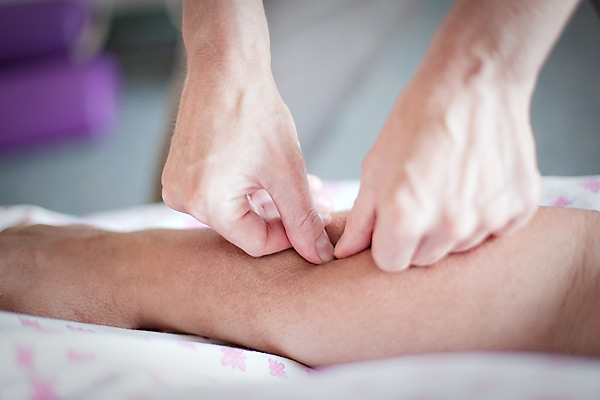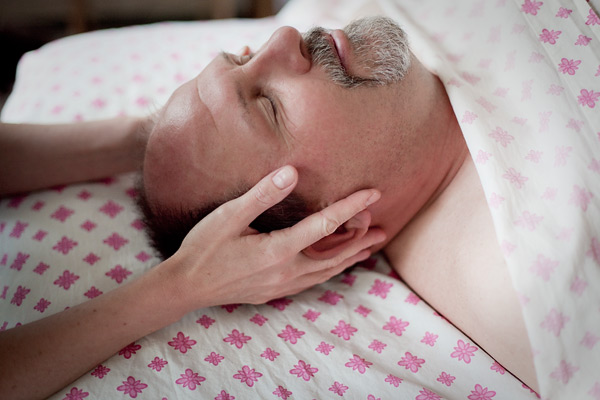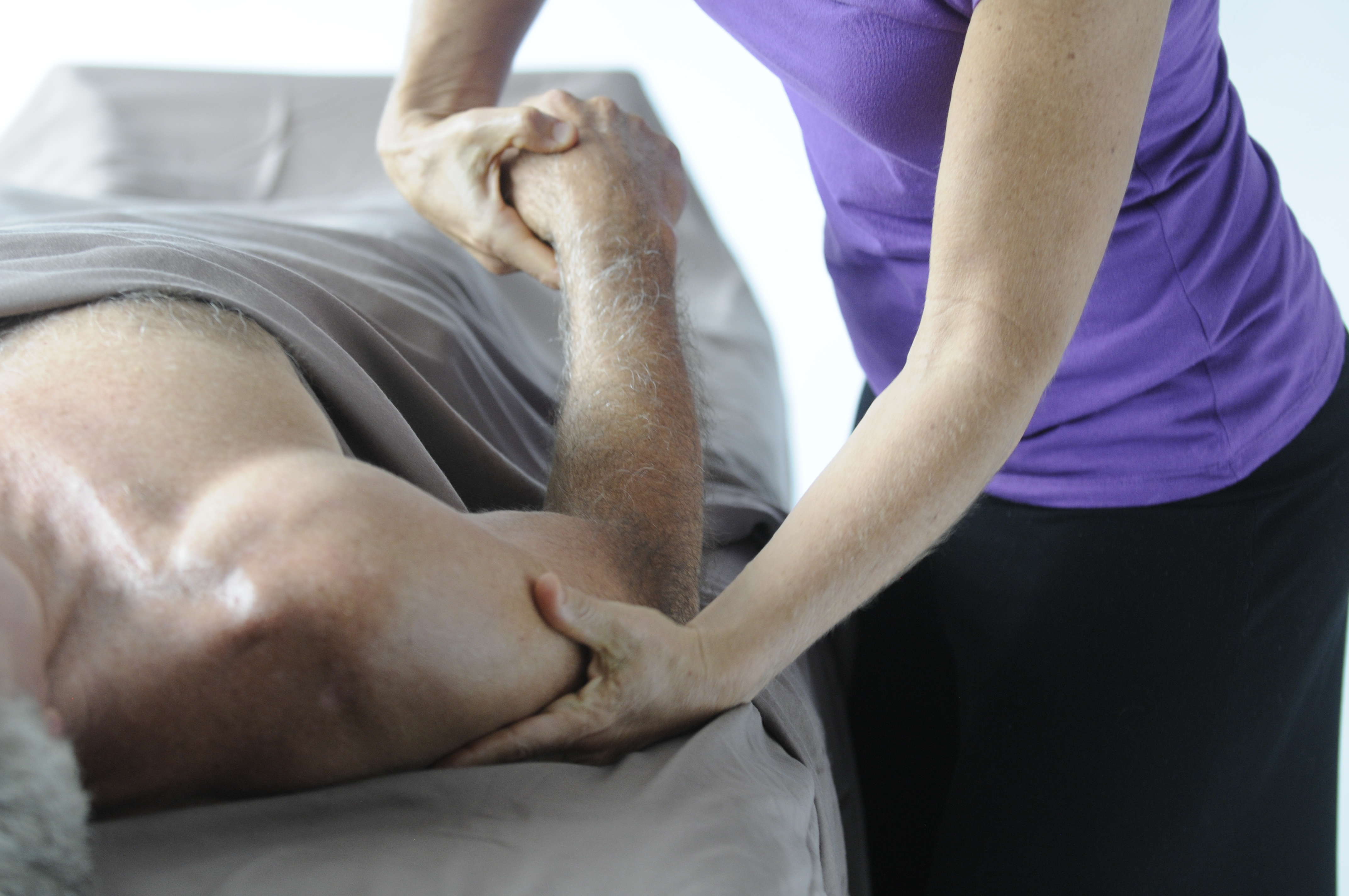
Integrative Therapeutic Massage
A variety of techniques may be combined to help the client achieve their desired outcome. Depending on the clients needs, this may include:
Swedish massage: incorporates long, flowing strokes and kneading of the muscles to improve circulation, reduce stress and tension and work out those knots and kinks.
Deep Tissue: helps address chronic tension with slow, focused, deep pressure on those problem areas.
Neuromuscular Therapy: addresses the connective tissue as well as the muscles to help correct dysfunction caused by misuse, overuse and injury.
Muscle Release TechniqueSM: combines stretching and focused pressure to help with overuse injuries such as carpal tunnel syndrome, tennis and golfers elbow, and plantar fasciitis.
Massage Cupping: utilizes the idea of negative pressure to reduce muscle tension and adhesions in the tissues. Cups may be placed in specific areas or moved over larger areas to improve circulation and reduce tension and pain.
Hot Stone Massage: Heated stones used during a massage facilitate deep relaxation and reduce muscle tension. Stones may be placed on areas of tension or used as massage tools. This therapy delivers moist heat deep into the muscles. Especially nice in the winter!

Lymphatic Drainage Therapy
Lymphatic Drainage Massage (LDM) employs a light touch in order to affect the lymphatic capillaries and nodes just under the skin. By lightly touching and moving the skin, we are encouraging and assisting the flow of lymph, thus stimulating the immune system. Lymphatic fluid distributes immune cells throughout the body and removes metabolic wastes and toxins from the tissues. The flow of lymph can be compromised due to a variety of factors, such as a sedentary lifestyle, injuries, surgeries, and stress and trauma leading to stiffness in the tissues.
Receiving LDM after injuries and surgeries can speed up your recovery. With your Doctor’s approval, LDM can be performed early in the healing process, due to it’s gentle approach. By enhancing the flow of lymph, edema (excess fluid) can be reduced, thus improving range of motion and activity level. LDM can help new scars form more efficiently as well as soften and minimize old scars.
If you suffer from frequent colds and allergies due to a sluggish immune system, LDM may be just what you need to enhance and stimulate the functioning of your immune system.
Lymphatic Drainage Massage can also be very beneficial for the health of your skin. Whether you’re looking for help with skin conditions such as acne, rosacea, or eczema, or wanting to minimize the appearance of wrinkles and cellulite, LDM may be just what you’re looking for.
Lymphatic Drainage Massage may be experienced as a stand alone therapy, or easily incorporated with other types of massage during a session, depending on your needs. Either way, LDM is a very relaxing and beneficial therapy.

Cranial Sacral Therapy
Cranial Sacral Therapy (or Craniosacral Therapy, CST) is a gentle, noninvasive method of evaluating and enhancing the function of the cranial sacral system. This system consists of the cranium or head, the sacrum or tailbone, the membranes that surround these structures and the spine, and the cerebrospinal fluid that flows around the brain and spinal cord.
Originally, it was taught that the bones of the adult human skull were fused solidly together and that there was no movement between them, but in the early 1900’s Dr. William G. Sutherland discovered that the bones of the cranium do in fact move in relation to each other throughout life. There is a cranial sacral rhythm or pulse which, with practice, can be perceived throughout the body. This rhythm is the flow of cerebrospinal fluid and corresponds to the subtle movement at the head and the base of the spine. With a very light touch, only about 5 grams of pressure, CST gently enhances the delicate movements of the bones of your head, spine and sacrum and assists the natural movement of fluid within the cranial sacral system.
Cranial sacral therapy can help restore the flexibility of the autonomic nervous system response, thus allowing the body to respond more appropriately to stress and avoid getting stuck in the “fight or flight” response. CST encourages the body’s natural healing mechanisms to improve the functioning of the central nervous system, dissipate the negative effects of stress, and enhance health. Any imbalance in the cranial sacral system could cause sensory, motor, or neurological disabilities. These problems may include chronic pain, eye difficulties, scoliosis, motor-coordination impairments, learning disabilities, and other dysfunctions of the central nervous system. CST enhances the body’s natural healing processes and allows the system to correct itself.

Bodywork & Parkinson's
Massage therapy can be beneficial for anyone wanting to improve flexibility and ease of movement and especially so for those with movement disorders such as Parkinson’s Disease (PD). By enhancing the circulation and easing muscle tension, movement becomes more fluid and effortless.
Massage therapy can reduce the daily aches and pains, improve mood and outlook on life, and improve quality of sleep, among many other benefits. And with regular massage sessions, these benefits can be maintained for longer periods of time. Think of it as a cumulative effect – just like with regular exercise, with regular massage, the benefits are maintained between sessions and built upon and improved upon in the next session. The more time your body spends in a low stress state, the more chance it has to heal and be at ease.
The results from a 2002 study reported in the Journal of Bodywork and Movement Therapies are encouraging. Sixteen adults with PD received thirty minute massage therapy or progressive muscle relaxation sessions twice a week for five weeks. Physicians rated the massage therapy participants as improved in daily living activities by the end of the study. Participants also rated themselves as improved in daily functioning including having more effective and less disturbed sleep.
Cranial Sacral Therapy (CST) can also be very beneficial for those living with Parkinson’s Disease (PD). Part of my training included a five week case study where I worked with an individual with PD. The results of this study indicate that CST may be helpful in slowing the progression of some of the symptoms of PD and in fact may help improve, at least temporarily, some symptoms. Of the 17 tracked symptoms, from pre-study to post-study, 13 improved, 3 remained the same, and 1 was worse. There seemed to be the most improvement in the area of balance and coordination. There was also an improvement in various aspects of quality of life.
The symptoms of PD tend to increase with stress and decrease with stress relief and rest. CST is a wonderful stress reliever and very helpful in enhancing tissue and fluid motion, relaxing connective tissues throughout the body, and for restoring flexibility of the autonomic nervous system response. In other words, CST helps the body to respond more appropriately to stressors and enables the body to move beyond the stress and not get stuck in the fight or flight response. It follows that more time spent in this relaxed state would lead to an improvement or stability of symptoms for a person with PD and that has been my experience with my PD clients.

Reflexology
Reflexology
Human beings have known for centuries that working on the feet can provide a calming and rejuvenating effect on the entire body. Cultures around the world have practiced various forms of footwork throughout the ages. “The Physician’s Tomb” in Egypt is famous for its’ pictographs and inscriptions depicting various medical procedures. One of the images depicts two practitioners applying pressure to the hands and feet of two other people. The inscription loosely translates as “Do not hurt me” and the response, “I shall act so you praise me.”
Modern reflexology was formalized and developed in the 1930's by Eunice Ingham who, after seeing hundreds of patients, created a detailed map of the body on the feet and hands.
How does reflexology work?
Reflexology uses this map to address the entire body. By working on specific areas of the feet and hands we can have a supporting effect on the muscles, organs, glands and all parts of the body. Using the nervous, circulatory and energetic systems of the body, reflexology sends signals through the nerve endings of the feet or hands, causing the corresponding body part to receive support, restoration of energy flow and endorphin release, providing a sense of calm and relaxation.
Our feet and hands do so much for us every day throughout our lives. Taking care of them improves our overall health and wellness, and just helps us feel great!
Prices
Prices for all services are the same (except for Hot stone – $10 more)
60 min: $75
75 min: $90
90 min: $105
Student & Senior (65+) Special: 60 min: $65, 75 min: $80, 90 min: $95
Package Discount: Buy 5 massages, Get 1 free
Time for selfcare...
Ready to improve your well-being and take care of yourself? Book your session today!